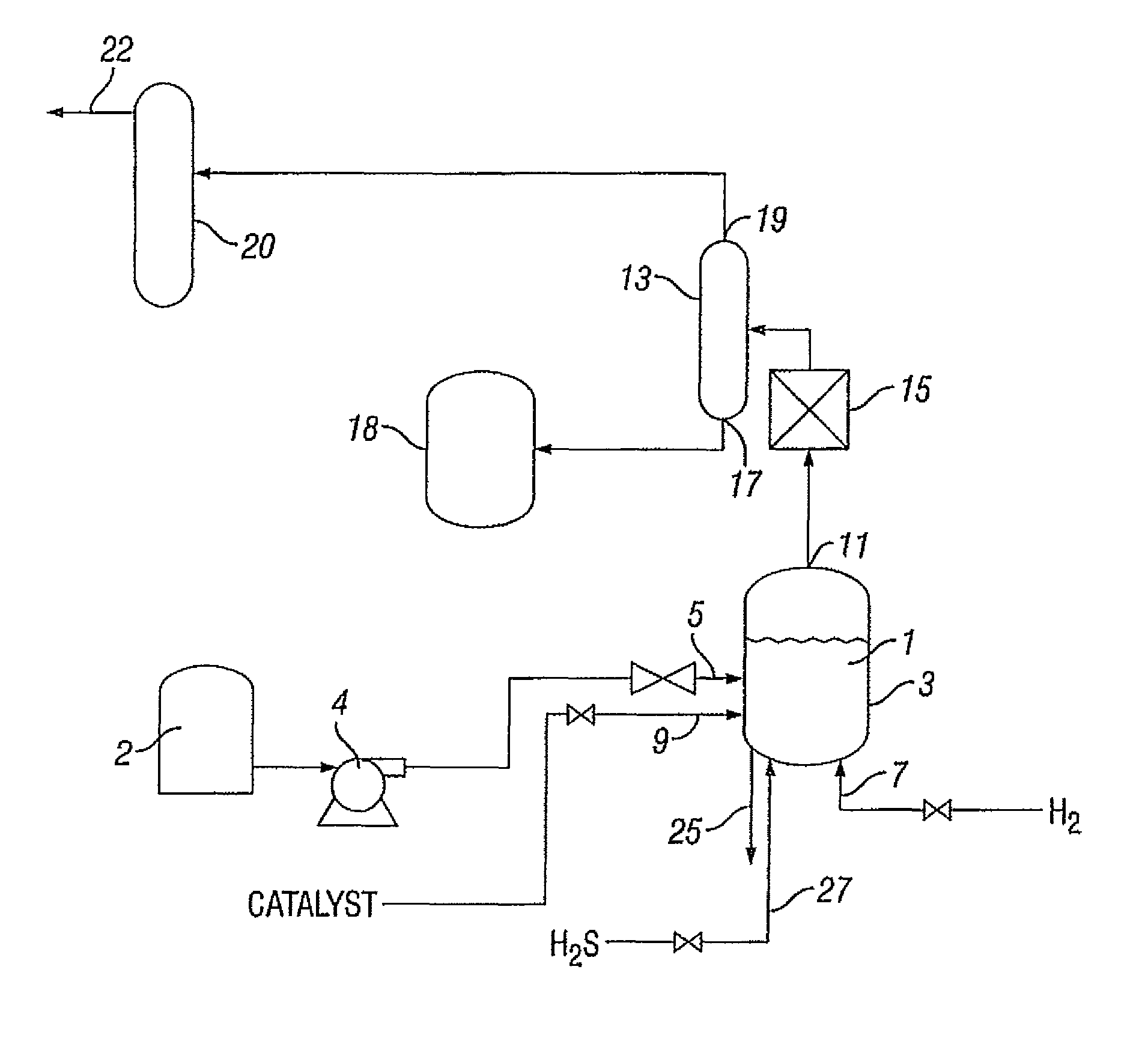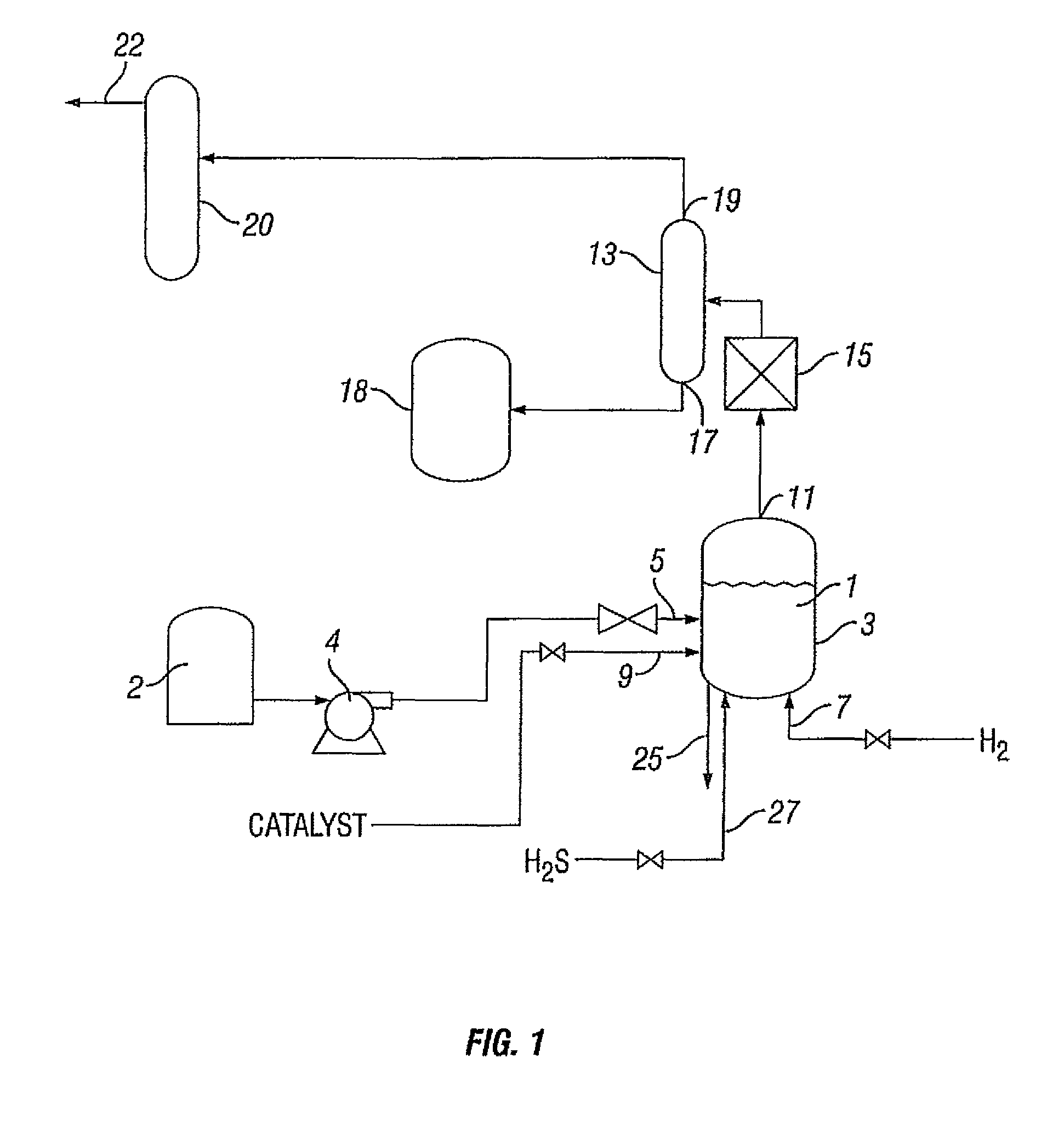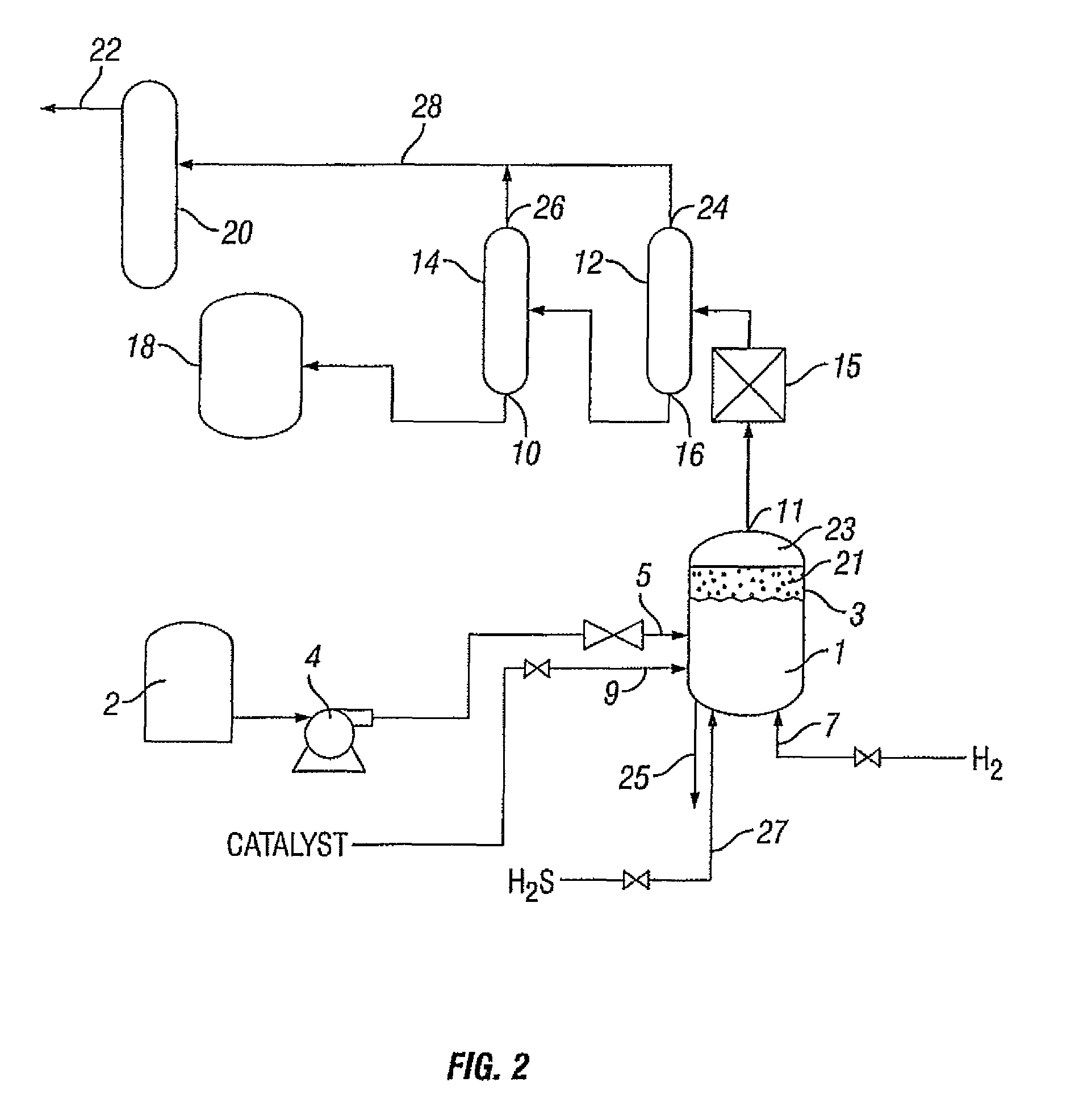Process for treating a hydrocarbon-containing feed
a hydrocarbon-containing feedstock and processing technology, applied in the direction of physical/chemical process catalysts, metal/metal-oxide/metal-hydroxide catalysts, effluent separation, etc., can solve the problems of coke formation, disadvantaged crudes that typically require a considerable amount of upgrading, and resource disadvantaged
- Summary
- Abstract
- Description
- Claims
- Application Information
AI Technical Summary
Benefits of technology
Problems solved by technology
Method used
Image
Examples
example 1
[0194]A catalyst for use in a process of the present invention containing copper, molybdenum, and sulfur was produced, where at least a portion of the catalyst had a structure according to Formula (XVII):
[0195]
A solution was prepared by mixing 781 grams of ammonium tetrathiomolybdate and 636 grams of Na2CO3 in 6 liters of deionized water. The solution was heated to 70° C. with stirring to generate Na2MoS4. The Na2MoS4 solution was then allowed to cool overnight. A separate solution of CuSO4 was prepared by mixing 1498 grams of CuSO4 in 6 liters of water. The CuSO4 solution was then added to the Na2MoS4 solution via pneumatic pump through a 0.02″×0.5″ nozzle while stiffing the mixture at ambient temperature. The mixture was stirred for two hours, and then the resulting solids were separated by centrifuge. 880 grams of solid particulate catalyst was recovered. The solids were then washed with water until the effluent from the wash had a conductivity of 488 μS at 33° C. The catalyst so...
example 2
[0196]Peace River bitumen having the composition shown in Table 1 was hydrocracked in a process in accordance with the present invention utilizing the catalyst prepared in Example 1 to determine the relative amounts of liquid hydrocarbon product, non-compressible gas, and coke produced by the hydrocracking reaction.
[0197]
TABLE 1PropertyValueHydrogen (wt. %)10.1Carbon (wt. %)82Oxygen (wt. %)0.62Nitrogen (wt. %)0.37Sulfur (wt. %)6.69Nickel (wppm)70Vanadium (wppm)205Microcarbon residue (wt. %)12.5C5 asphaltenes (wt. %)10.9Density (g / ml)1.01Viscosity at 38° C. (cSt)8357TAN-E (ASTM D664) (mg KOH / g)3.91Boiling Range DistributionInitial Boiling Point-204° C. (400° F.) (wt. %) [Naphtha]0 204° C. (400° F.)-260° C. (500° F.) (wt. %) [Kerosene]1 260° C. (500° F.)-343° C. (650° F.) (wt. %) [Diesel]14 343° C. (650° F.)-538° C. (1000° F.) (wt. %) [VGO]37.5>538° C. (1000° F.) (wt. %) [Residue]47.5
[0198]Three samples of the Peace River bitumen were hydrocracked at different hydrogen and hydrogen...
PUM
| Property | Measurement | Unit |
|---|---|---|
| boiling point | aaaaa | aaaaa |
| pressure | aaaaa | aaaaa |
| temperature | aaaaa | aaaaa |
Abstract
Description
Claims
Application Information
 Login to View More
Login to View More - R&D
- Intellectual Property
- Life Sciences
- Materials
- Tech Scout
- Unparalleled Data Quality
- Higher Quality Content
- 60% Fewer Hallucinations
Browse by: Latest US Patents, China's latest patents, Technical Efficacy Thesaurus, Application Domain, Technology Topic, Popular Technical Reports.
© 2025 PatSnap. All rights reserved.Legal|Privacy policy|Modern Slavery Act Transparency Statement|Sitemap|About US| Contact US: help@patsnap.com



